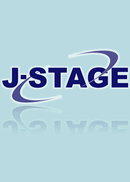All issues

Volume 40 (1986 - 198・・・
- Issue 6 Pages 323-
- Issue 5 Pages 265-
- Issue 4 Pages 211-
- Issue 3 Pages 135-
- Issue 2 Pages 78-
- Issue 1 Pages 3-
Volume 40, Issue 4
Displaying 1-7 of 7 articles from this issue
- |<
- <
- 1
- >
- >|
-
Studies on the Extraction of Uranium from Seawater by the Composite Adsorbent (Part 18)Shunsaku KATOH, Kazuhiko SUGASAKA, Masahiro KOBAYASHI1986 Volume 40 Issue 4 Pages 211-215
Published: 1986
Released on J-STAGE: February 19, 2013
JOURNAL FREE ACCESSWe have been making a study on the extraction of uranium from seawater with the composite adsorbent which consists of hydrous titanium oxide and activated carbon.
In this paper, the titanium-activated carbon flocculent adsorbents were prepared with PAH (polyacrylic acid hydrazide) as a binder, and the uranium adsorptivity of the flocculent adsorbents was examined in seawater. The flocculent adsorbents were found to show a high rate of adsorption for uranium similar to the powdery adsorbent and to adsorb 0.1 mg-U/g for 5 days from natural seawaterView full abstractDownload PDF (2773K) -
Studies on the Extraction of Uranium from Seawater by the Composite Adsorbent (Part 19)Shunsaku KATOH, Kazuhiko SUGASAKA, Tatsuo NOGI, Nobuo YOSHIZUMI, Kooji ...1986 Volume 40 Issue 4 Pages 216-221
Published: 1986
Released on J-STAGE: February 19, 2013
JOURNAL FREE ACCESSThe fibrous composite adsorbents consisting of hydrous titanium oxide and activated carbon were prepared with hydrophilic polyacrylonitrile system polymer as a binder under various conditions, and the adsorptive property of the fibrous composite adsorbents for uranium from seawater was examined.
The fibrous composite adsorbents which spun under high pressure (10 kg/cm2) was the finest having the largest pore volume. In addition, the amount of uranium adsorbed of the fibrous adsorbent was the largest. The rate of uranium adsorption by the fibrous adsorbent was the same as the rate of uranium adsorption by the powdery adsorbent. The excellent fibrous adsorbent adsorbed 0.23 mg U/g adsorbent for 10 d and 0.65 mg U/g adsorbent for 100 d.
The rate of uranium desorption from the fibrous adsorbent by alkali carbonate solution was large, and the uranium in the fibrous adsorbent desorbed 75% for 8 h and about 100% for 24h.View full abstractDownload PDF (3512K) -
Flowability for Kitchen Salt (Part 2)Akihiro GOTOH, Humikazu IKASAKI, Mitsutaka KAWAMURA1986 Volume 40 Issue 4 Pages 222-225
Published: 1986
Released on J-STAGE: February 19, 2013
JOURNAL FREE ACCESSCoefficients of wall friction were measured for salt powder against various wall materials, by using a press-loading shear tester developed. Two ring-plates of cold-press stainless steel and polyvinyl chloride were prepared for the tests. The effect of moisture content on the coefficient was also examined.
The following results were obtained:
Coefficients of wall friction against stainless steel and poly-vinyl chloride were found to be 0.25 and 0.38 respectively. In those tests against stainless steel, the coefficient obtained was independent on moisture content except the test for the original salt. The coefficient for the original salt was 30% smaller than that for the other moisture salts in the lower stress region. The effect of the coefficient on the flowability of salt powder was discussed by using a model of bulk flow of salt in a vertical pipe.It was found that the vertica stress of powder in the bulk was subject to a greater influence ofthe coefficient as the depth from the upper surface of the bulk increased.View full abstractDownload PDF (2880K) -
Corrosion Test of Metallic Plate with Wick in the Simulated Hot Saline Water Evaporating EnvironmentKenji TSUMURA, Masayuki YAMASHITA, Kenichi FUKUI1986 Volume 40 Issue 4 Pages 226-233
Published: 1986
Released on J-STAGE: February 19, 2013
JOURNAL FREE ACCESSA direct solar still with multi-effect thermal diffusion was developed by Oriental Metal Manufac-turing Co., Ltd.in 1978.It has much higher efficiency than the ordinary Basin type still.
However, there has been brought about a very difficult problem due to the serious corrosion ofits evaporator consisting of piled-up metallic plates. Therefore, a test was carried out under the simulated evaporating environment with hot saline water, and 17 kinds of metallic materials resistant to corrosion were selected for this purpose.
In the test, the outside of metallic sample plates was heated by infrared ray tube, and the saline water heated to 80-90°C was made flow slowly in the wick placed on the reverse side of the sample plate.
The results of this corrosion test showed that only three samples were resistant to corrosion in the finite test duration (5,800-6,400h), and the same result was obtained in the field test of this direct solar still made in Okinawa Island.View full abstractDownload PDF (3859K) -
Toshio HASHIMOTO1986 Volume 40 Issue 4 Pages 234-246
Published: 1986
Released on J-STAGE: February 19, 2013
JOURNAL FREE ACCESSDownload PDF (5963K) -
Noboru OGATA1986 Volume 40 Issue 4 Pages 247-253
Published: 1986
Released on J-STAGE: February 19, 2013
JOURNAL FREE ACCESSDownload PDF (4762K) -
Noboru OGATA1986 Volume 40 Issue 4 Pages 254-258
Published: 1986
Released on J-STAGE: February 19, 2013
JOURNAL FREE ACCESSDownload PDF (3937K)
- |<
- <
- 1
- >
- >|